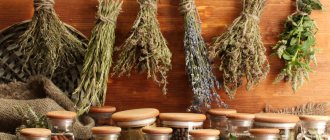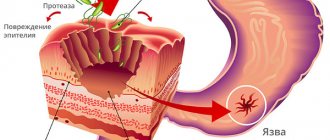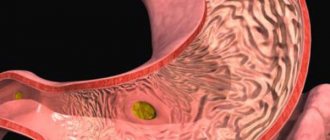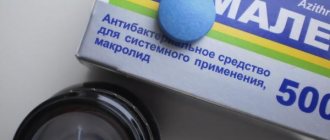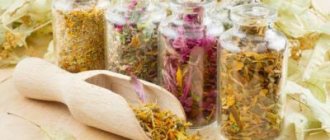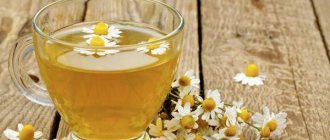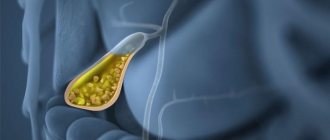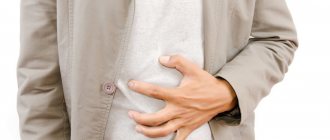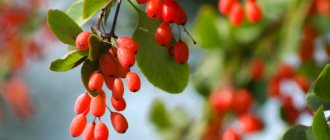Some foods can aggravate illnesses. Therefore, many patients have a question about whether it is possible to use lemon for pancreatitis. This citrus fruit, rich in vitamins, can strengthen the body and help with various diseases, but it also has contraindications. In particular, with inflammatory diseases of the pancreas.
Lemon for the pancreas
Benefits of citrus fruit
Lemon is primarily known for its high content of vitamin C, which improves metabolism and nourishes tissues. Lemon contains vitamins B, D, A and P, acids and mineral salts. This citrus fruit has antiseptic, antipyretic and anti-inflammatory effects. Removes toxins, cholesterol from the body, improves appetite and digestion. Helps stop bleeding, strengthens the immune system, and tones the body.
Harm of citrus fruit
Concentrated lemon juice leads to exacerbation of inflammation.
But the high content of citric and malic acids in it irritates the walls of the pancreas. Lemons, like other citrus fruits, stimulate the production of pancreatic and gastric secretions, which increases the load on the organ and causes inflammation of the mucous walls. This can lead to pancreatic diseases, so even healthy people should not get too carried away with this fruit. In addition, it is a strong allergen and can increase the amount of free histamine, a substance that causes inflammation, swelling and pain.
Lemon and its juice, especially concentrated ones, lead to exacerbation of existing chronic diseases and, in particular, pancreatitis. Just a few slices of this fruit can cause severe pain and nausea. Therefore, lemons are contraindicated for all those who have an inflamed pancreas.
Composition of the product and its beneficial properties for the body
With this disease, the enzymatic function of the body is disrupted, and gastric juice, instead of passing into the intestines, begins its activation already in the stomach, thus damaging the walls of the gland itself.
Citrus fruit has long been famous for its healing effects. Its composition is dominated by:
- mineral salts;
- water;
- lemon acid;
- ascorbic acid;
- flavonoids;
- Apple acid;
- galacturonic acid;
- micro and macroelements.
It is able to have an antiseptic and calming effect, as well as remove heavy metals from the body, which makes it especially useful for liver diseases.
Widely used in traditional medicine for vitamin deficiencies, rheumatism, colds, for poisoning with alkaline compounds, as an additive in various medicines, in cosmetology, perfumery, dietetics, and traditional medicine.
Harm and contraindications for use
The answer to patients’ questions about whether lemon is harmful to the pancreas will be positive.
The acid, which is contained in citrus fruits in enormous quantities, can cause even greater complications during the course of the disease.
The ban is imposed not only on the product itself, but also on dishes even with a small amount of it. It is better to replace it with vegetables with a similar content of vitamins, which will not have such a detrimental effect on the digestive gland.
For example, potato and pumpkin juices are very useful, which can be taken already on the third day after an attack, in diluted form.
Golden fruit is contraindicated:
- children under three years of age and allergy sufferers;
- for stomach ulcers;
- for some problems with the condition of the teeth (juice can negatively affect the condition of tooth enamel);
- during pregnancy and lactation.
Citrus fruits have a large number of contraindications to their consumption for many people. Especially in diseases accompanied by disruption of the secretory functions of the digestive tract.
Lemon for acute pancreatitis
When treating acute forms of the disease, a diet is always prescribed that excludes everything spicy, salty and sour. Such products irritate the pancreatic mucosa and force the organ to work more actively, which significantly slows down recovery. Therefore, sour-tasting fruits and vegetables are strictly prohibited in acute pancreatitis. Initially, the doctor prescribes fasting in order to reduce stress and reduce inflammation. After a few days, it is allowed to take berry compotes, pumpkin and potato juices diluted with water. But even highly diluted lemon juice remains strictly prohibited during treatment.
Lemon in treatment
Lemon for pancreatitis can be used for medicinal purposes. Although citrus fruit is classified as forbidden, it is beneficial in small quantities. Most often, the sour fruit is included in recipes that enhance the production of bile and cleanse the gallbladder and bile ducts.
Advice! To enhance the effect, it is recommended to do an enema of lemon juice diluted with water. Then lie on your right side with a heating pad placed in the liver area. After 20 minutes, empty your bowels.
Since chronic pancreatitis often leads to diabetes mellitus, it is necessary to adhere to a diet that excludes spicy, smoked and fatty foods
To prepare a medicine that stimulates the choleretic process, there are several recipes:
- Grind 1 fruit in a meat grinder, then mix with honey (100 g) and garlic (1 large clove). Take the prepared pulp every morning before breakfast, 1 tsp.
- Place the lemon in a container, add water and put on fire. After 5 minutes, squeeze out the juice and mix with the egg yolk. After consuming this mixture, do not eat for 3.5 hours. Repeat the procedure after 3 days, then after 6, 12 and 24.
To avoid attacks or other complications, it is important to consult a doctor before using traditional methods of treatment
Returning to a nutritious diet should be done gradually, following the instructions of a specialist.
Lemon for chronic pancreatitis
During the remission stage of the disease, when the list of permitted foods increases, doctors also do not advise consuming lemon. It is advisable to exclude from the menu dishes prepared with the addition of even a small amount of citrus fruit. It is important to remember that even a small dose of lemon juice can irritate the pancreas and cause an attack of the disease. It is healthier to season a salad with olive oil rather than lemon juice, and it is better to simply boil fish baked with lemon slices. You should be attentive to dishes prepared with citrus juice or zest, for example, sauces, marinades, baked goods and desserts, as they can harm the gland.
The same applies to drinks - tea with lemon, fresh juices and, of course, lemonades. It is better to brew not strong tea with a small amount of sugar, and replace fresh citrus fruits with vegetable ones. In some cases, the attending physician may adjust the menu. It is important to remember that one of the main causative agents of pancreatitis is harmful and irritating food. Therefore, diet and complete abstinence from prohibited foods are an important step on the path to recovery.
In the chronic stage
The chronic form of pancreatitis also requires exclusion of lemon from the diet.
The pancreas can get sick not only after eating citrus fruit in its pure form, but also after adding a small amount of it to any dish:
- Everyone's favorite tea with lemon should be a taboo for people suffering from pancreatitis, as should water with a small amount of citrus juice added. Even a thin slice of lemon can provoke gastrointestinal ailments and cause an acute attack, so it’s better not to risk it.
- Baked fish with herbs and lemon slices also has an adverse effect on the body with pancreatitis.
- It is necessary to give up confectionery and baked goods, to which many housewives like to add lemon zest for aroma and taste.
- If you have pancreatitis, it is recommended to refrain from eating salads seasoned with lemon juice, marinades and sauces derived from citrus juice and pulp. Instead, it is better to use olive oil, which promotes fat absorption.
Doctors recommend that patients suffering from pancreatitis replace lemon with fruits containing similar vitamins that will not have a detrimental effect on digestion.
Some foods can aggravate illnesses. Therefore, many patients have a question about whether it is possible to use lemon for pancreatitis. This citrus fruit, rich in vitamins, can strengthen the body and help with various diseases, but it also has contraindications. In particular, with inflammatory diseases of the pancreas.
Reviews from doctors about medicines containing citrus fruit
According to the recommendations of gastroenterologists, even though the use of the component may be beneficial for an inflamed gallbladder, lemon and pancreatitis are two incompatible concepts.
In various online publications and other publications you can find simply a huge number of medicines with citrus, here, for example, is one of them:
- grind 1 kg of fruits along with zest through a meat grinder;
- add a head of garlic, mix.
It is recommended to take this entire remedy with an infusion of herbs and after a month all symptoms of inflammation of the digestive gland will disappear.
Having carefully examined this recipe, any person who has at least once felt an exacerbation of pancreatic inflammation will confidently say that he will not take it. An explosive mixture of two strictly prohibited products will, after a couple of days of consumption, lead to the operating table even for someone who has been in remission for a long time.
Before taking a product with a questionable composition, you should consult your doctor. Any doctor can answer the question: is it possible to use lemon for pancreatitis or not? – will answer negatively. After an attack, you will have to exclude this ingredient from your diet, and even dishes with its addition.
All ingredients in a diet with a high concentration of acids will slow down the healing process and stimulate the appearance of ulcers on the gastrointestinal mucosa.
Features of nutrition for cholecystitis
The development of the inflammatory process of the gallbladder is directly dependent on the type of nutrition provided for cholecystitis. A gentle diet helps not only to restrain the further deterioration of the disease, but also to alleviate its symptoms, which bring a lot of anxiety to the patient.
That is why it is important to know what the diet for cholecystitis is based on, which foods can be consumed, and which of them are strictly prohibited.
Cholecystitis is an acute inflammation of the gallbladder. The cause of this condition can be a number of circumstances, such as systemic disturbances in diet and sedentary lifestyle, infectious diseases, disruption of the endocrine system, and the formation of stones that prevent the excretion of bile. Since the state of the body is directly affected by the amount of bile, the diet for such a disease is mainly aimed at removing it from the body.
General recommendations
Nutrition for cholecystitis should be gentle on the body and not put a strain on the functioning of the gallbladder. As a result of its unloading, the body quickly restores the normal functioning of the digestive system. The general recommendations for such a diet are strict, but they are not difficult to follow. Moreover, this diet promotes weight loss without strict diets and fasting. By the way, the latter is contraindicated for cholecystitis. The body should not experience hunger, so there should be many meals, at small and approximately equal intervals of time. At the same time, you should not overeat, because both hunger and overeating have equally negative effects on the liver and gallbladder function. The first meal should be immediately after a person wakes up. There is also a strict requirement regarding food temperature. Food should not be cold (at least 15 °C) and not too hot (no more than 60 °C).
Eating fried foods is undesirable, since the amount of cholesterol in the body in this case increases sharply, which leads to additional stress on the liver and gall bladder. Preferred methods of heat treatment of products are boiling, baking or stewing.
During an exacerbation, it is recommended to consume more liquid foods. Fasting is allowed only in acute cholecystitis, when the patient has nausea and vomiting in addition to pain. In this case, a three-day fast is recommended. During this time, you should drink plenty of fluids to avoid dehydration. You can also drink herbal infusions, weak black tea and mineral water of medium mineralization. After relief of the condition, you can gradually add liquid crushed food first, and then proceed to normal nutrition in accordance with the diet.
Prohibited and permitted products
The list of foods allowed on this diet is quite wide. It includes vegetables, herbs, lean meats and fish, and dairy products. The menu must include soups. Moreover, these can be both dairy and vegetable soups. Particularly useful in this case are a variety of puree soups, in which traditional cream is replaced with milk to reduce the calorie content of the dish. Such soups must be cooked in low-fat broths. It is not advisable to use mushroom and fish broths.
Fresh or processed vegetables can be eaten for cholecystitis in almost any quantity. The exception is cabbage.
For cholecystitis, it is useful to eat fruits. During periods of exacerbation, it is better to use them in a more gentle form in the form of jelly.
In this case, vegetable oil is beneficial for the body. It is better to give preference to cold-pressed olive oil. It is rich in useful and necessary microelements and vitamins for the body and is easily digestible. Potatoes, pasta, whole grain and wheat bread are allowed. But it is important not to overdo it and consume these foods in moderation. It is advisable to consume poultry, rabbit and lean fish stewed or boiled. It is necessary to enrich the body with beneficial probiotics. To do this, it is necessary to add a sufficient amount of fermented milk products to the menu, which increase appetite, as they speed up the metabolism in the body.
Also, your daily diet must include a variety of porridges, for example, semolina, millet or oatmeal. You can cook them with either milk or water.
It is necessary to limit the consumption of very fatty foods:
- fatty meats (pork, duck);
- butter;
- high-calorie sweets (chocolate);
- chicken eggs;
- fried food.
Fatty foods require the production of large amounts of bile, and due to cholecystitis, not enough of it enters the stomach.
The digestion process becomes more difficult, which can lead to an exacerbation of the disease.
Increased production of bile is caused by consuming large amounts of spicy, salty and smoked food, so you should not eat it, especially during an exacerbation of cholecystitis.
It is necessary to limit, or better yet eliminate, the consumption of alcohol, especially sparkling wines and beer. These drinks contribute to the formation of gallstones. For the same reason, you should not drink carbonated water and coffee. You will have to give up all kinds of store-bought sauces, such as ketchup and mayonnaise.
If cholecystitis is observed in children, then it is necessary to adhere to the same diet with a variation of dishes that are more familiar to them. You can diversify the children's menu with all kinds of vegetable, fruit and cottage cheese casseroles. In this case, you must use low-fat cottage cheese. A great dessert option for children is baked apples. If you use sweet varieties, you don’t have to add sugar at all. In this version, dessert will be especially useful.
The diet for cholecystitis cannot be called strict. It includes a very wide list of foods that can be consumed without the risk of worsening the disease. But when creating a menu, it is important to pay special attention to the state of the body after consuming certain products. Since each organism has its own individual characteristics and can have difficulty accepting certain foods. Therefore, if such reactions are detected, this product should be limited in use.
Source: dieta.gastrit-i-yazva.ru
Treatment of pancreatitis and cholecystitis with diet
Diet for pancreatitis and cholecystitis is not just abstract nutritional principles; This is part of the treatment, without following the rules of which the medications taken will be wasted money. This is explained simply: both the pancreas and the gallbladder take the main part in the digestion of food (it is these organs that break down foods to their basic structural elements, which are “understood” by the intestines).
Depending on the nature of the inflammatory process (it can be acute or chronic), you need to either give the organs rest for a while or gently stimulate their work. In the first case, they will be able to recover, in the second, they will not atrophy.
Diet in the acute stage of the process
Nutrition for pancreatitis and cholecystitis in the acute stage or during exacerbation of the chronic process should provide the organs with complete rest, allowing them to recover. For this:
- in the first three days you cannot eat, you can only drink non-carbonated boiled water and sometimes 100-200 ml per day of “Borjomi” or “Polyana kvasovaya”, from which all gases have previously been removed;
- by day 3, if the abdominal pain has passed, you can expand the diet. Warm unsweetened tea, ground vegetable soup without frying, oatmeal or rice porridge cooked in milk and water (1:1), crackers, steamed chicken protein omelette are added to it;
- after another week, low-fat cottage cheese and stewed vegetables (except cabbage) may be allowed;
- if the above products do not increase abdominal pain, do not provoke diarrhea and vomiting, add boiled low-fat fish, soufflé or steamed cutlets from white chicken or turkey meat, semolina and buckwheat porridge;
- only after 1-2 months do they move on to the 5p table, which is recommended for adherence for a long time - about a year.
Diet for chronic pancreatitis
It is called “table 5p”, and is characterized as “gentle, with a reduced amount of carbohydrates (mainly sugar) and extremely low fat content”:
- daily calorie content is 2,600 – 2,800 kcal;
- proteins about 120 g/day (no more than 60% animal proteins);
- vegetable fats – about 15 g/day, animal fats – 65 g/day;
- carbohydrates – no more than 400 g;
- sugar – only 1 tablespoon/day;
- instead of sucrose - 20-30 g of sorbitol or xylitol per day;
- salt – no more than 10 g;
- liquids - 2.5 liters, without gas;
- white bread (yesterday's) - no more than 250 g/day.
Principles of the 5p table
To improve digestion in diseased organs, you need to follow the following nutritional principles:
- meals – 5-6 times a day, in small portions;
- the temperature of food taken is about 40 degrees;
- the total weight of food per day should not exceed 3 kg;
- the basis of the diet is protein foods;
- fried, salted and pickled foods should be excluded;
- vegetables should be boiled or steamed;
- soups - either vegetable or meat broth;
- drink drinks based on chicory flowers;
- Eat chicken eggs (or better yet, only whites) 2-3 times a week in the form of omelettes and boiled eggs.
Advice! The diet should contain a sufficient amount of fiber foods. In addition, you need to consume at least 1 glass of kefir and several pears daily.
What you can and cannot eat
Which foods are allowed for pancreatitis and cholecystitis and which are not, see the table:
| Can | It is forbidden |
| Rusks and yesterday's white bread | Alcohol |
| Vegetarian soups | Rye bread |
| Beetroot | Puff pastry |
| Zucchini | Fresh bread |
| Boiled lean meat and fish (you need to cook without skin) | Baking |
| Steamed egg white omelettes | Broths: meat, fish |
| Porridge: buckwheat, semolina, rice, oatmeal | Borsch |
| Carrot | By-products |
| Potato | Okroshka |
| Green pea | Milk soups |
| Pumpkin for cholecystitis and pancreatitis | Smoked products |
| Boiled vermicelli | Full fat dairy products |
| Ripe, non-acidic fruits that need to be ground | Porridge: millet, wheat, corn |
| Baked apples | Legumes |
| Sugar-free juices from non-acidic fruits and berries | Fried foods |
| Compotes | Cabbage |
| Jelly with xylitol or sorbitol | Radish |
| Low-fat fermented milk products | Radish |
| Vegetable oil – refined, up to 15 g/day | Onion and garlic |
| Tea with milk and lemon | Eggplant |
| Rose hip decoction | Sorrel |
| Butter – only for prepared foods (per day – no more than 30 g) | Spinach |
| Savory pies with cottage cheese | Bell pepper |
| Oatmeal jelly | Animal fats |
| Greenery | Spices |
| Sometimes - high-quality boiled sausage without fat | Raw fruits |
| Sauerkraut, if it is not sour | Figs |
| Dates | |
| Grape | |
| Snacks | |
| Mushrooms and mushroom broths | |
| Salo | |
| Mustard, horseradish | |
| Ice cream | |
| Products with pastry cream | |
| Coffee, cocoa |
Let's look at some individual “controversial” products:
- Bananas for pancreatitis and cholecystitis are allowed, but in small quantities (no more than 1 piece per day), as they contain. It is advisable to use them to add additional flavor to low-fat yogurt, casserole, pie based on low-fat yogurt and dry cookies. You can also drink banana juice, but also in small quantities.
- Sources of essential omega-3 fatty acids, nuts, are allowed for cholecystitis and pancreatitis if the disease is in the chronic stage. This product is good for snacking. It stops inflammation of pancreatic tissue, protects tissue from destruction. But nuts are a fatty food, so you should eat no more than 15 grams of them (any) and only if you are not allergic to them.
- Honey for pancreatitis and cholecystitis is allowed only if the inflammation has not affected the endocrine apparatus of the pancreas and diabetes has not developed. In this case, the product is useful - it helps to “expel” bile that has stagnated in the gallbladder.
Advice! For these diseases, you need to consume honey not whenever you want, but in the morning, on an empty stomach, dissolving a tablespoon of the product in 100 ml of water.
- Persimmon is not recommended for consumption for cholecystitis and pancreatitis. If you really want to eat it, then this can only be done outside of an exacerbation, and only if there is no diabetes.
You can get additional information about nutrition for the pathologies under consideration from the article: 100 approved foods for pancreatitis.
Delicious recipes
So that life with inflammatory diseases of the pancreas and gall bladder does not seem so gray and boring, it is necessary to diversify it somewhat. We offer the following recipes for pancreatitis and cholecystitis.
- Potato cutlets. We take 7 medium potatoes, peel them, cook them, and when they cool down, grate them. To this mass add finely chopped 250 g of milk or doctor's sausage, as well as 200 g of grated hard cheese. Mix in 3 raw eggs, herbs and green onions to taste, salt, 2 tablespoons of flour. You should get a mass from which cutlets are made (they need to be breaded in flour). Prepare the dish in a double boiler.
- Vegetable soup with cheese meatballs. Take 2.5 liters of either water or vegetable broth and put it on fire. Prepare the meatball mixture: grate 100 g of mild hard cheese, mix with softened butter, 100 g of flour and 1 raw egg, herbs and a small amount of salt. Stir and place in the refrigerator for 30 minutes. For the broth: coarsely grate 1 carrot, cut 1 bell pepper into strips, and cut an onion and 5 potatoes into cubes. Cook for about 15 minutes in boiling water. Next, throw in bean-sized meatballs, formed from the cheese mass that was in the refrigerator.
- Pumpkin is a very healthy product.
You can prepare many dishes from it. For example, pumpkin casserole with apples. You need to take 600 g of pumpkin, peel and grate it. Do the same with 200 g of raw apples. Then simmer the pumpkin and apples in a frying pan with 10 g of butter and rub with a fork. Add 100 ml of milk to the resulting puree, bring to a boil, add a little (about 60 g) semolina, cook for 8 minutes over low heat. Next, remove from heat, cool to 60°C, add a tablespoon of sugar and 1 egg, mix . This mass should be placed on a baking sheet greased and sprinkled with breadcrumbs, and baked in the oven. Serve with sour cream.
But perhaps it would be more correct to treat not the effect, but the cause?
We recommend reading the story of Olga Kirovtseva, how she cured her stomach... Read the article >>
